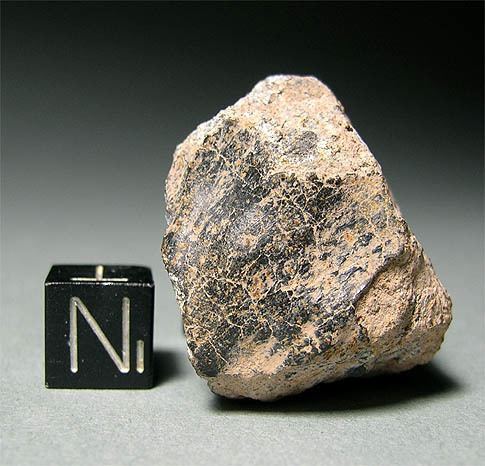Type Chondrite Group H4-5 Region Carancas | Class Ordinary chondrite Country Peru Observed fall Yes | |
 | ||
The Carancas meteorite fell on September 15, 2007, near the village of Carancas in Peru. The impact created a crater and scorched earth around its location. A local official said that “boiling water started coming out of the crater, and particles of rock and cinders were found nearby”, as “fetid, noxious” gases spewed from the crater.
After the impact, villagers who had approached the impact site became ill with a wide array of symptoms. The ground water in the local area is known to contain arsenic compounds, and the illness is believed to have been caused by arsenic poisoning when residents of the area inhaled the vapor of the boiling arsenic-contaminated water.
INGEMMET (Instituto Geológico Minero y Metalúrgico) of Peru released in September 2007 an analysis which showed that the fragments from the meteorite had a chondritic texture and a mineral composition of pyroxene (1) 40%, olivine 20%, feldspar 10%, pyroxene (2) 10%; kamacite 15%, troilite 5%, and traces of chromite and native copper.
The official classification of the Carancas meteorite, accepted by the Meteoritical Society was undertaken by a team of scientists working at the University of Arizona. The meteorite is an ordinary chondrite, an H chondrite breccia, containing clasts of petrologic types 4 to 5. The formal classification is H4-5. The meteoroid had experienced a considerable amount of shock before its ultimate encounter with Earth.
